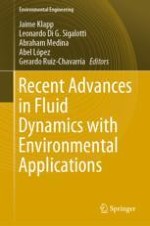This book gathers selected contributions presented at the Enzo Levi and XX Annual Meeting of the Fluid Dynamic Division of the Mexican Physical Society in 2014. The individual papers explore recent advances in experimental and theoretical fluid dynamics and are suitable for use in both teaching and research. The fluid dynamics applications covered include multiphase flows, convection, diffusion, heat transfer, rheology, granular materials, viscous flows, porous media flows, geophysics and astrophysics.
The contributions, some of which are introductory and avoid the use of complicated mathematics, are suitable for fourth-year undergraduate and graduate students. Accordingly, the book is of immense benefit to these students, as well as to scientists in the fields of physics, chemistry and engineering with an interest in fluid dynamics from experimental and theoretical points of view.
